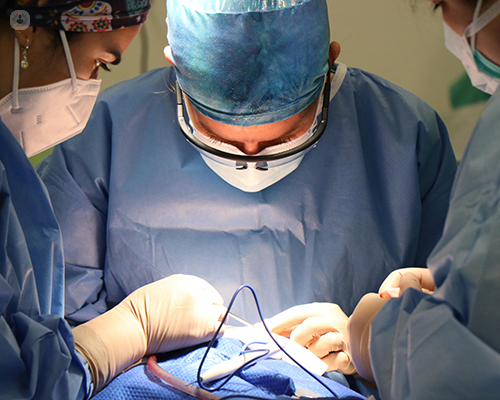An expert insight into a coronary angioplasty
Autore:A coronary angioplasty, also referred to as a percutaneous coronary intervention, is a surgical procedure designed to improve blood flow in the coronary arteries, which deliver oxygen-rich blood to the heart muscle. Dr David Lipkin, renowned consultant cardiologist, provides an expert insight.

When is a coronary angioplasty indicated?
A coronary angioplasty is mainly performed to treat coronary artery disease, a condition in which the coronary arteries supplying blood to the heart become narrowed or obstructed. This narrowing is often caused by atherosclerosis, which is a build-up of fatty deposits. Coronary artery disease can lead to symptoms such as chest pain, shortness of breath or fatigue, and in more severe cases, it can lead to a heart attack.
A coronary angioplasty restores adequate blood flow to the heart muscle by widening the narrowed arteries. This process ensures that the heart receives sufficient oxygen and nutrients, thereby relieving symptoms, improving heart health, and reducing the likelihood of a heart attack.
How is a coronary angioplasty performed? What is the role of stents (if they are to be used)?
The process begins with preparation, during which you will receive general anaesthetic to ensure your comfort during the procedure. A catheter (a thin, flexible tube) is then inserted into a blood vessel, usually in the groin or wrist, and threaded through the vascular system to the coronary arteries, guided by X-ray imaging (fluoroscopy).
To visualise the arteries, a contrast dye is subsequently injected through the catheter, allowing the cardiologist to assess the location and severity of any blockages. Once the catheter is in place at the blockage site, a small balloon at its tip is inflated, which expands the narrowed section of the artery and improves blood flow.
Often, a small mesh tube called a stent is inserted in the artery to keep it open during the procedure after the balloon has been deflated and removed. The stent remains in the artery permanently to prevent it from collapsing or narrowing again, a condition known as restenosis.
Lastly, the catheter is removed, and pressure is applied to the insertion site to stop any bleeding. You will be monitored in a recovery area for a few hours to ensure there are no immediate complications and that your vital signs are stable before being discharged.
What should I expect during the recovery period?
In the days and weeks following a coronary angioplasty, you might feel some mild discomfort, including pain or bruising at the site where the catheter was inserted. This typically subsides within a few days. To ensure proper healing of the incision site, you will be advised to avoid heavy lifting and intense activities for approximately one week.
Scheduled follow-up appointments with your cardiologist are crucial for assessing the success of the procedure and adjusting your treatment plan if needed. Generally, most patients experience a quick recovery and can resume their usual activities within about a week, though recovery times may differ from person to person.
Will I need medication after a coronary angioplasty?
Yes, medication is an essential part of the post-procedure care for most patients. Common types of medications include:
- Antiplatelet drugs: These medications help prevent blood clots from forming around the stent and within the coronary arteries. An example is aspirin.
- Statins: These medications help manage cholesterol levels, which can contribute to the build-up of plaque in the arteries.
- Beta-blockers and ACE inhibitors: These medications may be prescribed to manage blood pressure, reduce strain in the heart, and improve heart function.
You will need to follow the medication regimen prescribed by your cardiologist. Regular follow-up visits will help ensure that the medications are working effectively and that there are no adverse effects.
If you would like to book an appointment with Dr David Lipkin, head on over to his Top Doctors profile today.


